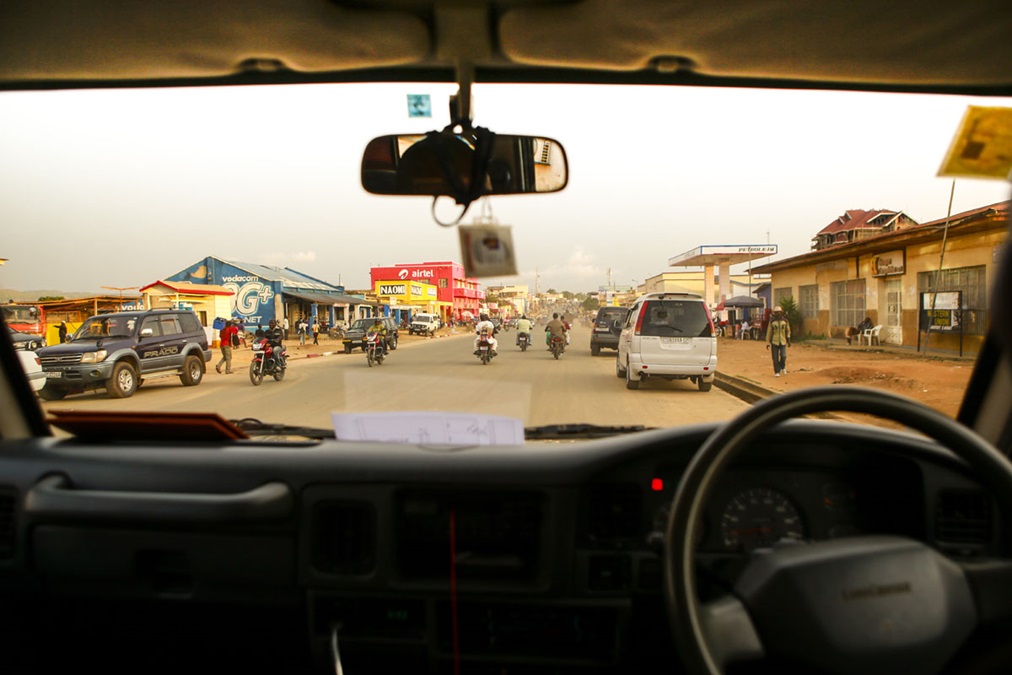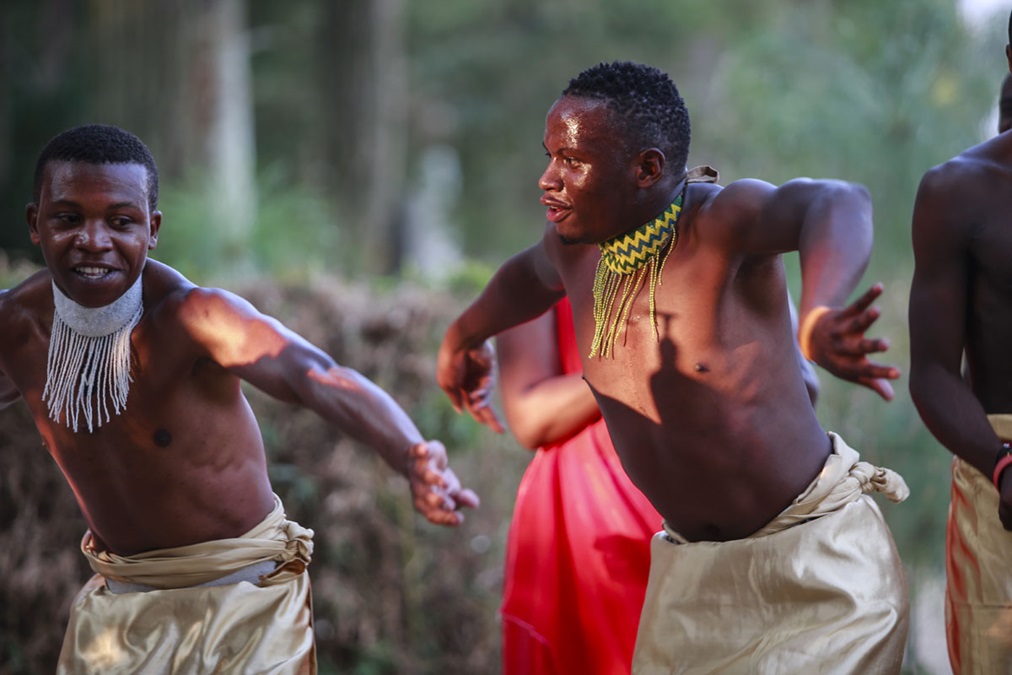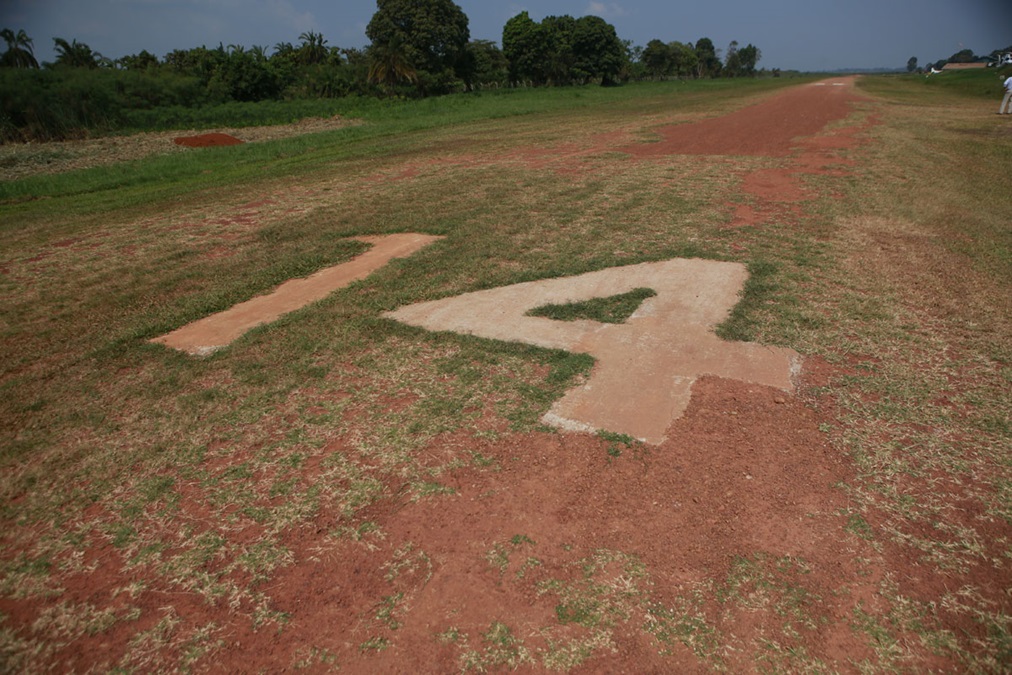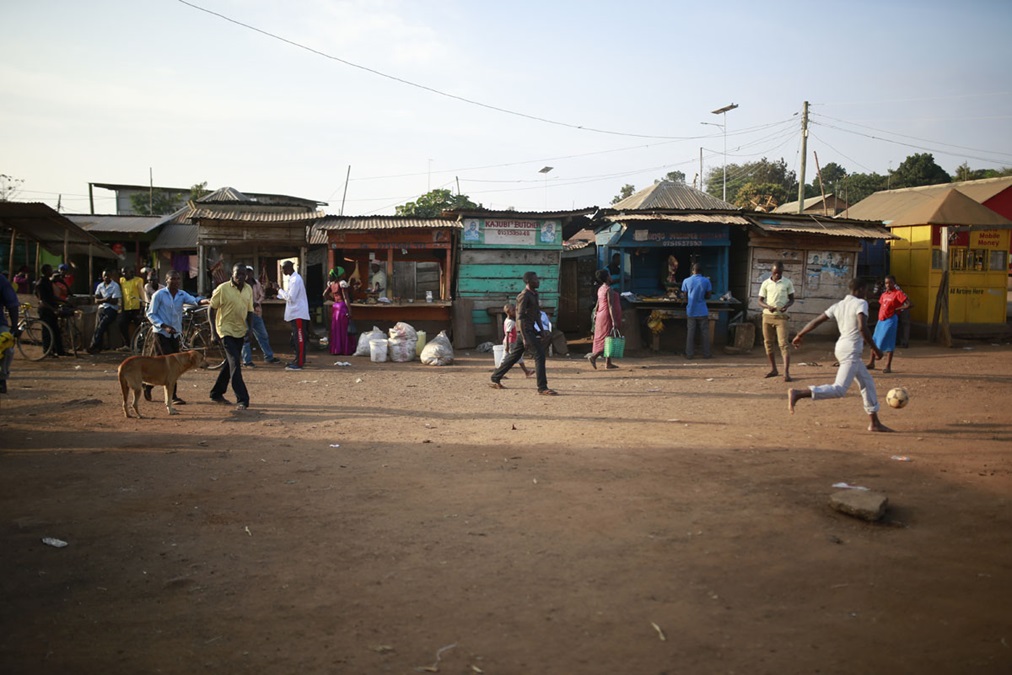Hope has wings
Flying humanitarian aid in Africa







We are flying over a garden of Eden—an intensely verdant space, which hides a serpent in its folds.
Africa is a mystery to most Westerners. The usual response is either fear or a desire to help—many a missionary organization has tried. To a great extent many succeeded: in emerging areas there are a lot of “God Saves” laundromats and “He Is With You Always” furniture stores. But one thing has always been clear about Africa: In areas such as Uganda and the DRC, it’s not easy to get around. The roads to most of the small villages throughout the nations are rock-strewn ruts through teeming jungle grass. “Infrastructure” isn’t an oft-used word. What opened African villages to the world was the airplane. Bush planes with their massive tundra tires could land in these hills and valleys, bringing medicine, food, and education to areas that barely understand what a television set is—more than 60 years after it became commonplace in American homes.
Serving a difficult country
“Africa is full of extremes. Extremes of beauty in everything from what you see to smell and taste... To horrible things, gunshots, screams, smells you can’t imagine.” —Dawson Tanner, former AirServ pilotWhen famine ravaged war-torn Ethiopia in 1984, Bob Lehnhart, a former executive for Mission Aviation Fellowship (MAF)—since 1942 one of the most active Christian missionary organizations in the world—began flying nonsectarian relief into the area in de Havilland Twin Otters. Since then, various donated aircraft have made up the fleet of AirServ International, which now consists of six Cessna Caravans. These workhorses have been flown through the years in war-torn and disease-stricken countries worldwide by intrepid U.S. pilots, Europeans, Canadians—and, now, Ugandans. At one point in the organization’s lifespan, a 40-person workforce directed operations from a suburban office outside Washington, D.C., in Warrenton, Virginia. At its historic height and revenue peak, AirServ was a key player in the tsunami relief effort in Indonesia. Today the headquarters is located in a more logical place than northern Virginia—on the airport in Entebbe, Uganda.
Entebbe is familiar for world events in the 1970s. In 1976, an Air France flight was hijacked by Palestinian and German terrorists and flown to Entebbe, and despot Idi Amin—then the country’s president—welcomed the hijackers. Five people were killed in a raid to free the Israeli hostages, most famous of whom was Yonatan Netanyahu, who commanded the raid and was the older brother of current Israeli Prime Minister Benjamin Netanyahu. The original airport terminal building, bullet holes from the raid still visible, can be seen from AirServ’s hangars and headquarters. Surrounded by United Nations aircraft and camps for American forces now assisting in South Sudan, AirServ is a major player in the relief efforts originating in Entebbe, 20 miles south of Uganda’s capital Kampala. “We have served those in need for more than 40 years around the world,” says Dave Carlstrom, president and CEO of AirServ. “At this time, Entebbe is the center.”
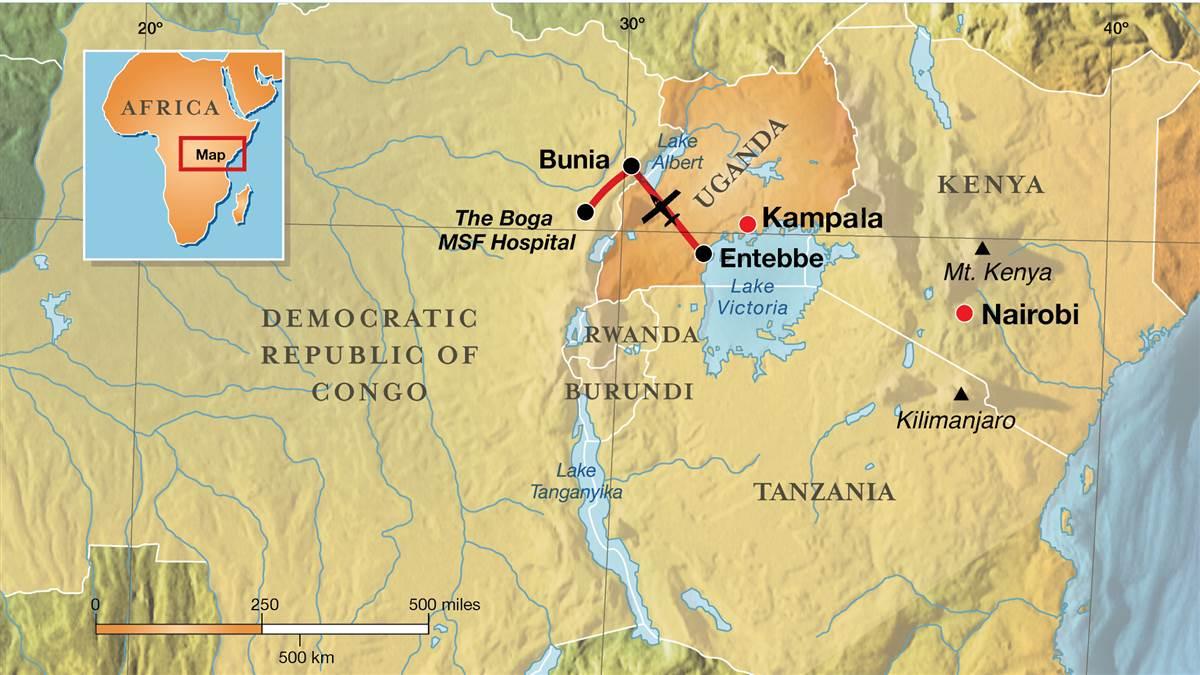 Uganda is bordered by the DRC to the west, Rwanda to the south, and South Sudan to the north—troubled countries all. More than 5.4 million people died in the Congolese civil wars; countless died in the genocide of the Rwandan Civil War; and more than 15,000 people are displaced in South Sudan because of its current strife. In June, Angola had an outbreak of yellow fever.
Uganda is bordered by the DRC to the west, Rwanda to the south, and South Sudan to the north—troubled countries all. More than 5.4 million people died in the Congolese civil wars; countless died in the genocide of the Rwandan Civil War; and more than 15,000 people are displaced in South Sudan because of its current strife. In June, Angola had an outbreak of yellow fever.
All this background means little to the villagers of Boga, where the organization Médecins sans Frontières (Doctors Without Borders) has a hospital and nearby headquarters. A flight from Entebbe to Bunia gets visitors into Congo, where they will get a connecting flight in one of AirServ’s Caravans to the airstrip that serves the MSF hospital. At the hillside grass strip are two MSF Toyota Land Cruisers and various local children.
“I came for the romance of flying in Africa. Romance has its highs and lows; this is true aviating.” —Cindy Silong, chief pilot, AirServThe drive to the hospital is through dense grass, on rutted roads, crossing streams—and avoiding the mothers and their children who emerge from the grass like apparitions. A honk of the horn sends them back into the towering blades.
MSF Field communication manager Natacha Buhler, logistician Thomas Moozohese, and much-needed medicine for a suffering Boga boy bit by a rabid dog the night before. A drive to Bunia would take more than four hours in the dry season, even though the areas are only 30 miles apart. During the rainy season, the drive could take weeks. The Caravan flight takes 15 minutes.
The 80-bed hospital includes two pediatric wards. There are new babies, families, expectant mothers, and the fathers. The hospital is staffed by an international cadre of doctors, nurses, nutritionists, and other healthcare experts. They rely on the transportation capabilities provided by AirServ, which leases its fleet of Caravans to Médecins sans Frontières and the World Food Programme, the food assistance branch of the United Nations. AirServ provides support to four bases in the DRC and two in Chad, north of Congo, ferrying cargo, personnel, medicine—and from the goods in its warehouses, just about anything else you can imagine. There’s paint, food, tires, tools, office equipment, clothing, and more stacked in its warehouses.
Tales from the bush
Two-person crews man the Caravans as required by MSF, the current lessee. Ugandan pilot Victor Lumansi, 28, and co-pilot Jaydeep Pathade, 30, of India, are on duty in Boga. Both are fierce supporters of the work and mission of AirServ. And Lumansi, the more veteran of the pair, tells stories that would make your hair curl. On one mission AirServ was called in to help a villager bitten by a snake. Once on the ground, Lumansi picked up a man whose entire left side of his body was paralyzed from the venom. Thick swarms of black flies covered the man and the AirServ crew as they lifted him out and to the larger hospital in Bunia. A week later Lumansi flew him back to his village—minus one leg, but alive.
In Bunia, Jules Banga, a DRC native, is AirServ’s base manager. It is his responsibility to handle the flight planning for the pilots flying missions for MSF. On Banga’s desk in his small office is a familiar book—Rod Machado’s Private Pilot Handbook. Banga is doing his best to learn how to fly, even though cost and aircraft availability make it nearly impossible. That, and the daunting task of scheduling the AirServ aircraft for the constant needs of MSF. He joined AirServ in 2009. When Bunia was the site of an uprising in 2002, his father was gunned down on the street where Banga’s office is now. “You cannot predict your life,” he says with a sad smile.
“We have served those in need for more than 40 years around the world. At this time, Entebbe is the center.” —Dave Carlstrom, AirServ CEOAll AirServ employees have stories to tell. And the expatriots who have flown for AirServ over the years have tales about their time in Congo. There’s Dawson Tanner, a North Carolina pilot whose appearance in the National Geographic film, Congo Bush Pilots, made him a heartthrob; Corliss “Cork” Zylstra, a former F–100 and F–4 pilot who says “there’s no such thing as an ex-fighter pilot,” and who goes home to Minnesota once a year to help on his family’s pig farm; Bruno Oringi, AirServ’s director of safety, a Ugandan with a Texas accent; and Danielle Payant, an international flight attendant for Delta who helps AirServ with marketing and social media.
Then there is Cindy Silong. Standing about five feet tall, this single mom is the chief pilot and director of flight operations for AirServ. A California girl who had to take the backseat to her older brothers in the family airplane, she’s a long way from where she learned to fly in Mammoth Lakes. “You don’t have the luxuries of the developed world,” she says of flying here. “It’s a high-risk environment, coupling the weather and marginal airstrips. The level of safety is amped up. You have villages where the runway is nearly in the center of town and kids come out and animals are crossing. You have to be on guard at all times. In Congo there’s heavy precipitation, high terrain, and low fog; in Chad there are huge sandstorms coupled with thunderstorms.”
Zylstra remembers flying single-pilot missions for AirServ. “The only lights were cooking fires on the ground,” he remembers. “Then, like everything else, the wars ended and the need slowly decreased. It became as it should be—less confrontation, less disease.”
Tanner, who flew 10 years for AirServ and now lives in Entebbe with his Ugandan wife and two children, says that although the missions of humanitarian aviation organizations like AirServ change, the need never does. “The infrastructure never changes. It could be typhoid, cholera, violence, starvation, disease, or the collateral damage from war. It’s a fascinating place to fly—and a huge humanitarian issue.”
Carlstrom, in his waning years as AirServ CEO, knows that the winds will change and the humanitarian need will increase again. If it’s not war, it’s disease—the serpents in the land of Eden. By the summer of 2016, the needs of MSF had increased so much that each high-time Caravan was flying 60 hours per month all over the DRC. “I lie awake at night trying to figure out how to get more airplanes,” Carlstrom says. “We are the last mile for air transportation for humanitarian aid. We function on what’s happening in the world, whether it’s manmade or natural disasters. It is a genuine good that our flights provide.”
“I came for the romance of flying in Africa. Romance has its highs and lows, but this is true aviating,” says Silong. “Every day is a learning experience. I’ve been in Africa just shy of 10 years. The work we do here is beneficial; as they say in aviation, the sky’s the limit.”
Email [email protected]







